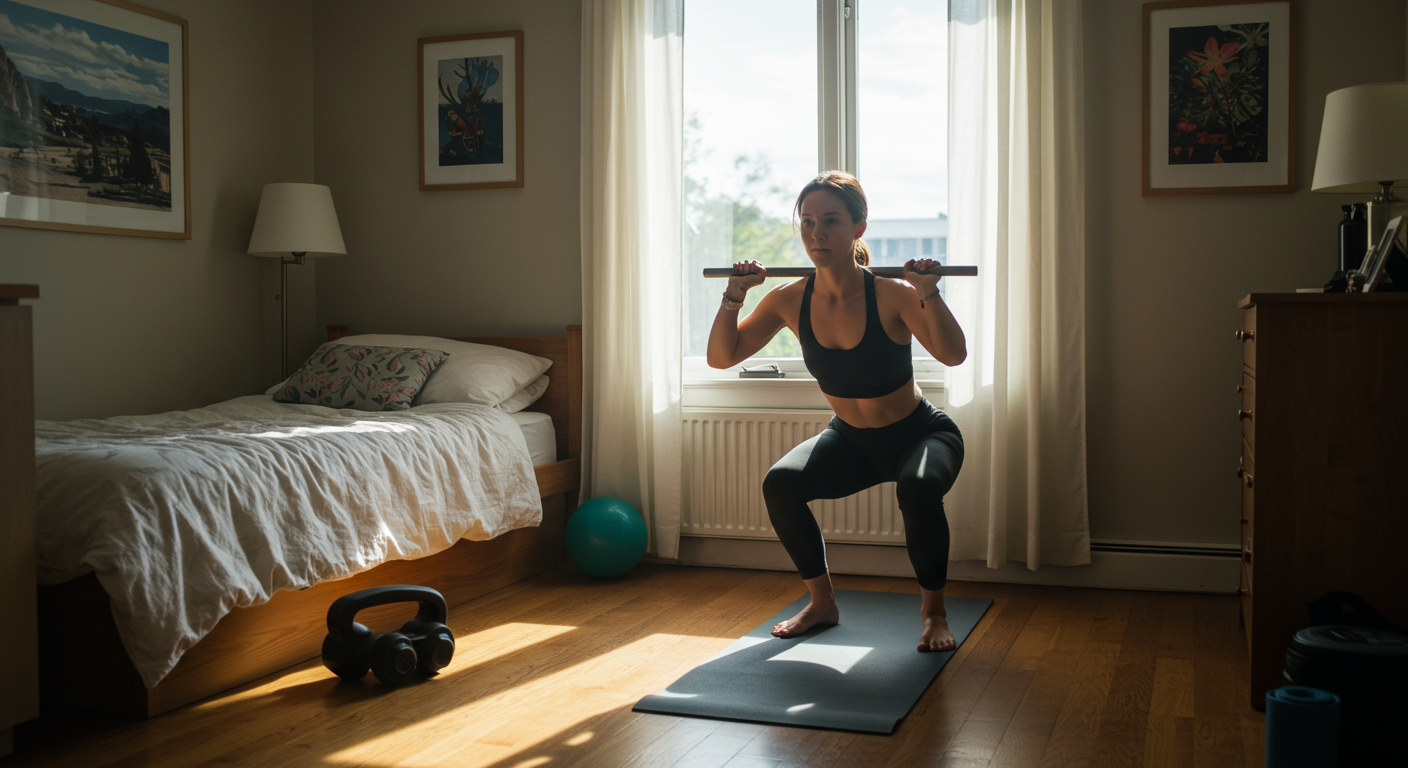Struggling to find effective workouts in a tight space? This guide provides an actionable, no-equipment, full-body workout, perfect for intermediate fitness enthusiasts and students with busy schedules. Let's maximize your fitness potential at home!

Mastering Key Techniques for This Workout
Before jumping in, let's review some key techniques. Proper form is crucial to prevent injuries and maximize results. Focus on controlled movements and engaging the target muscles throughout each exercise. For example:
- Plank: Maintain a straight line from head to heels, engaging your core.
- Push-ups: Keep your body straight, lower your chest towards the floor, and push back up.
- Squats: Keep your back straight, chest up, and lower your hips as if sitting in a chair.
Advanced Variations and Progressions
Ready to push yourself? Here are some ways to increase the intensity:
- Push-ups: Try decline push-ups (feet elevated) or clap push-ups.
- Squats: Add jump squats or pistol squats (if you have the balance).
- Plank: Increase hold time or add plank variations like side planks.
Step-by-Step Instructions (with pro tips)
This 20-minute full-body workout requires no equipment. Perform each exercise for 45 seconds, followed by 15 seconds of rest. Repeat the entire circuit three times. Make sure to warm up for 5 minutes beforehand and cool down for 5 minutes after. Remember to maintain good form.
- Jumping Jacks: Start with feet together, jump your feet out, and raise your arms overhead. Return to the starting position. (Pro Tip: Keep your core engaged)
- Push-ups: Standard push-ups, or modify on your knees. (Pro Tip: Keep your back straight)
- Squats: Stand with feet shoulder-width apart, and lower your hips as if sitting in a chair. (Pro Tip: Keep your chest up)
- Walking Lunges: Step forward with one leg and lower your body until both knees are bent at a 90-degree angle. Alternate legs. (Pro Tip: Keep your front knee over your ankle)
- Plank: Hold a straight line from head to heels, engaging your core. (Pro Tip: Squeeze your glutes)
- High Knees: Bring your knees up towards your chest, pumping your arms. (Pro Tip: Keep your core engaged)
- Burpees: Start standing, drop to a push-up position, jump your feet forward to your hands, then jump up with hands overhead. (Pro Tip: Modify by stepping back instead of jumping)
- Mountain Climbers: Get into a high plank position. Bring your knees to your chest alternating each leg. (Pro Tip: Keep your back flat)
Maximizing Your Results at Home
To get the most out of your home workouts, consistency is key. Aim to work out 3-4 times per week, and gradually increase the intensity or duration of your workouts over time. Listen to your body and take rest days when needed. Combine your workout with a healthy diet to further boost your results.
Advanced Training Principles
Consider these principles to improve your training:
- Progressive Overload: Gradually increase the intensity, duration, or frequency of your workouts.
- Specificity: Focus on exercises that target the specific muscles you want to develop.
- Variation: Change up your workouts to prevent plateaus and keep things interesting.
Integrating with Your Existing Routine
These workouts are easy to integrate into your existing schedule. You can do them before class, during a study break, or as a quick way to start or end your day. Consider setting a specific time each day for your workout to establish a habit.
Pushing Your Limits Safely
Always warm up before exercising and cool down afterward. Listen to your body and stop if you feel any pain. Stay hydrated by drinking plenty of water before, during, and after your workout. If you're new to exercise or have any health concerns, consult with a healthcare professional before starting a new workout routine.
Expert-Level Home Fitness Insights
- Nutrition: Pair your home workouts with a balanced diet rich in protein, carbohydrates, and healthy fats to fuel your body and support muscle growth.
- Sleep: Aim for 7-9 hours of quality sleep each night to allow your body to recover and rebuild muscle tissue.
- Mindset: Stay positive and focus on your progress. Celebrate your achievements, no matter how small.